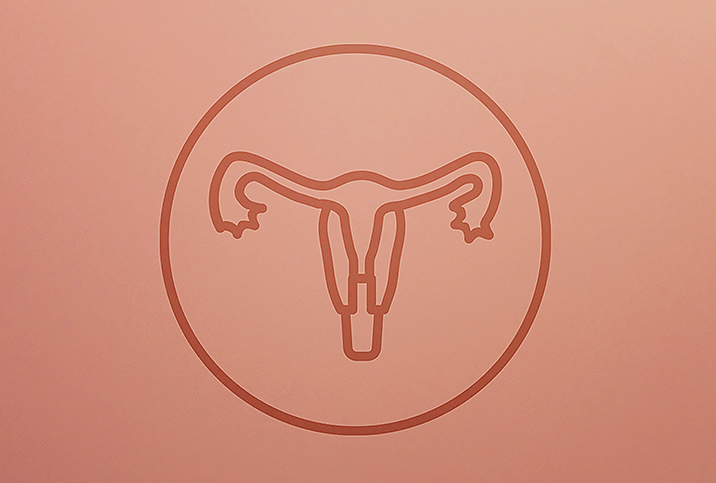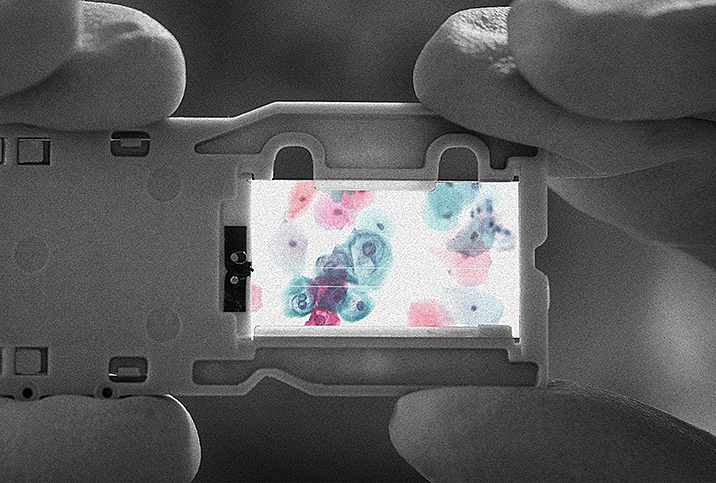A Pap Smear Explainer (and Why Some Men Need Them, Too)

Getting a Pap smear may not be the highlight of anyone's day, but it's an important routine exam that can detect cervical cancer early, or even before it develops. Typically, a Pap smear is performed on the cervix, the opening to the uterus, but a similar test can be done to detect anal cancer—this exam is recommended for some men.
The Pap smear usually takes just a few minutes, but understanding each part of it, as well as what factors your doctor will consider in evaluating your results, will help you take ownership over your health.
How is a Pap smear performed?
Routinely conducted in a doctor's office, a Pap smear will require you to recline with your legs lifted and spread. The doctor will insert an instrument called a speculum into the vagina to dilate it, which allows better access to the cervix, and will then collect cells from the cervix using a small brush or spatula. This might cause some discomfort, but every patient experiences it differently. The cells are then tested for any abnormal growth that could indicate cancer or a precancerous condition. Results usually come back from the lab in a week or a few weeks.
Although experiences vary, most women describe the test as awkward, uncomfortable and sometimes a little painful. It is quick, however, and no anesthesia or other drugs are necessary. Due to the sensitivity of the cervix, the test might result in cramping, discomfort or light bleeding for a day or two after the test. If symptoms are more severe, tell your doctor promptly.
Why is a Pap test necessary?
Cervical cancer will be diagnosed in about 14,000 women in 2021, but diagnoses of precancerous conditions are far more common, numbering about 100,000 a year. Precancerous conditions are highly treatable, meaning patients with this diagnosis have an actionable way to prevent cancer, and even in cases where cancer is diagnosed, some 44 percent are in the early stages, giving patients a 92 percent five-year survival rate.
The prevalence of cervical cancer has dropped significantly since 1976, when the Pap smear was first formally recommended. Some estimates suggest that from 1976 to 2009, Pap smears were associated with a reduction of 105,000 to 492,000 cases of cervical cancer.
It's important to note, however, that in recent years, the medical community has developed a preference for HPV testing over Pap testing. Testing for HPV (human papillomavirus) is more sensitive and accurate, and therefore needs to be done less frequently, which is more convenient for the patient. While Pap tests are still diagnostically helpful, even lifesaving, follow your doctor's recommendations for cervical cancer screening.
How is HPV related to cervical cancer?
HPV is the most common sexually transmitted infection (STI) in the United States and is transmitted by having unprotected sex with an infected person. HPV comes in more than 150 strains, two of which cause most cases of genital warts and about 13 of which are linked to cervical cancer.
Nearly 80 million people in the United States are infected with HPV, including about 14 million new cases each year, mostly among younger people, according to the Centers for Disease Control and Prevention (CDC). In addition to cervical cancer, HPV has also been linked to cancer of the vulva, vagina, penis, anus and throat.
Who should get a Pap smear, and when?
The U.S. Preventive Services Task Force recommends women start getting Pap smears at age 21 and continue every three years until age 65. Women with certain risk factors, including the following, should get Pap smears more often:
- A previous Pap test showing precancerous cells
- HIV infection
- A compromised immune system because of organ transplant, chronic corticosteroid use or chemotherapy
- Exposure to diethylstilbestrol (DES) prior to birth
- A history of smoking
What's all this about men getting Pap smears?
Research tells us that gay and bisexual men have a significantly higher chance of getting anal cancer than heterosexual men. As with women with cervical cancer, many cases of anal cancer are thought to be related to, if not caused by, HPV. And like women, most men don't develop symptoms and don't know they have HPV, a problem made worse by the fact that there is no approved HPV test for men.
While the body's immune system usually clears an HPV infection in the anus, in some cases, HPV can cause cell alterations that lead to cancer. For this reason, clinicians recommend that men who have sex with other men should get an anal Pap smear regularly, as determined in consultation with their doctor.
But the good news is that for men, the Pap smear test is much less invasive than for women. It involves a swab being inserted a few centimeters into the anus, rotated, and then swabbed onto a liquid medium for testing.
In the end, a Pap smear is a minor inconvenience that could result in saving your life. Given the strong links between HPV and cervical and anal cancer, regular testing is the safest bet for both women and men.


















